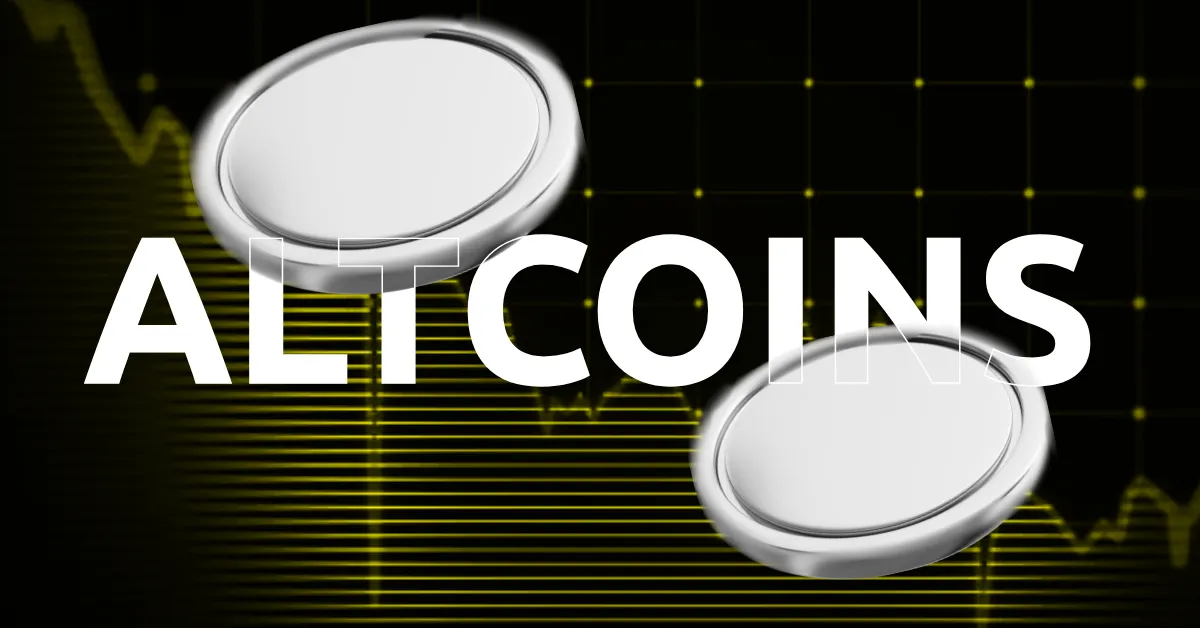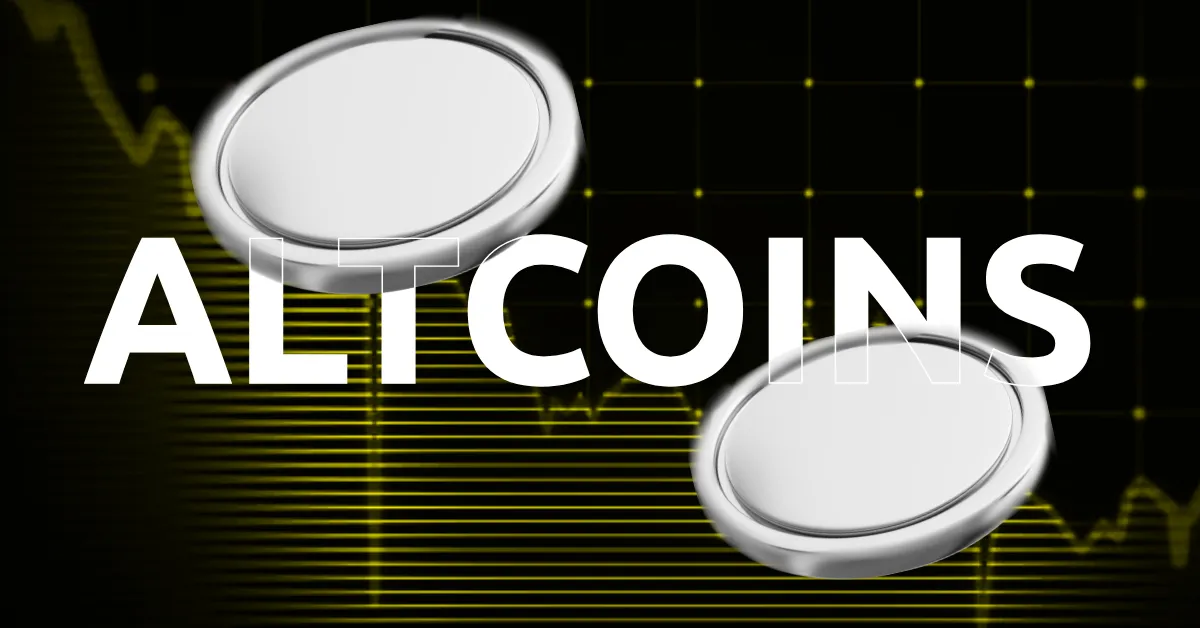The Untapped Potential of Low-Cap Altcoins in 2025
The Appeal of Low-Cap Altcoins
The cryptocurrency market has always been a rollercoaster of opportunities and risks. Among the most intriguing segments of this market are low-cap altcoins—cryptocurrencies with a market capitalization typically below $100 million. These digital assets are often overlooked by mainstream investors but hold immense potential for exponential growth. Unlike Bitcoin or Ethereum, which have already reached substantial market valuations, low-cap altcoins are still in their early stages, offering investors the chance to get in on the ground floor of what could be the next big thing in crypto.
The allure of low-cap altcoins lies in their potential for explosive growth. A relatively small influx of capital can significantly increase their value, leading to substantial returns for early investors. Stories of 100x or even 1000x returns are not uncommon in the crypto community, driving interest in these smaller projects. However, it’s essential to recognize that this potential comes with a higher degree of risk. The volatility, liquidity issues, and the prevalence of scams in this market make it a high-stakes game that requires careful navigation.
The Risks of Low-Cap Investments
Investing in low-cap altcoins is not for the faint-hearted. The risks are manifold, and understanding them is crucial for any investor looking to venture into this space.
Volatility
Low-cap altcoins are inherently more volatile than their larger counterparts. Their prices can fluctuate dramatically based on market sentiment, news events, and even social media hype. This volatility can lead to both rapid gains and devastating losses. For instance, a single tweet from a prominent figure in the crypto community can cause a low-cap altcoin to surge or crash within hours. This unpredictability makes it essential for investors to have a solid risk management strategy in place.
Liquidity
Liquidity refers to the ease with which an asset can be bought or sold without significantly affecting its price. Low-cap altcoins often suffer from low liquidity, making it difficult to execute large trades without causing price slippage. This lack of liquidity can be problematic, especially during market downturns, when investors may find it challenging to sell their holdings at a favorable price.
Project Maturity
Many low-cap altcoins are associated with relatively new projects that are still in the early stages of development. These projects may lack a proven track record, a strong team, or a clear roadmap for future growth. Investing in such projects is akin to betting on a startup—there’s a high chance of failure, but the potential rewards can be substantial. It’s crucial to thoroughly research the team behind the project, their experience, and their vision for the future.
Scams and Rug Pulls
The low-cap altcoin market is unfortunately susceptible to scams and “rug pulls,” where developers abandon a project after raising funds, leaving investors with worthless tokens. These scams can be sophisticated, making it difficult for even seasoned investors to spot them. It’s essential to be vigilant and conduct thorough due diligence before investing in any low-cap altcoin.
Evaluating Low-Cap Altcoins
Given the risks involved, thorough research and careful evaluation are essential before investing in low-cap altcoins. Here are some key factors to consider:
Team and Development
The team behind a project is often the most critical factor in its success. Look for experienced developers, advisors, and a clear organizational structure. A transparent and communicative team is a positive sign. Additionally, analyze the project’s development activity. Is the team actively working on the project? Are they releasing updates and addressing community concerns? Regular updates and active engagement with the community are good indicators of a project’s potential.
Technology and Use Case
Understand the technology behind the altcoin and its intended use case. Does it solve a real-world problem? Is it innovative and disruptive? A strong use case and solid technology are essential for long-term success. For example, projects that focus on interoperability between blockchains or those that leverage artificial intelligence for data analysis and security could have a competitive edge.
Community and Adoption
A vibrant and engaged community is a valuable asset for any crypto project. Look for active discussions on social media, forums, and other online platforms. Growing adoption and real-world usage are also positive indicators. A strong community can drive awareness, attract more investors, and contribute to the project’s success.
Tokenomics
Analyze the tokenomics of the altcoin, including its supply, distribution, and any mechanisms for inflation or deflation. A well-designed tokenomics model can incentivize long-term holding and contribute to price appreciation. For instance, projects with a limited supply or those that implement mechanisms to reduce inflation can be more attractive to investors.
Market Sentiment
Gauge the overall market sentiment towards the altcoin. Is it generating positive buzz and attracting attention from investors? While hype can be misleading, it can also be an indicator of potential growth. Keeping an eye on market trends and sentiment can help investors make more informed decisions.
Promising Sectors and Potential Altcoins for 2025
While identifying specific altcoins with certainty is impossible, several sectors within the cryptocurrency market show promise for growth in 2025. These include:
Decentralized Finance (DeFi)
DeFi aims to recreate traditional financial services in a decentralized and permissionless manner. Low-cap DeFi projects that offer innovative solutions or target niche markets could see significant growth. For example, projects that focus on lending, borrowing, or yield farming could attract investors looking for high returns.
Artificial Intelligence (AI)
The intersection of AI and blockchain is a burgeoning field. Altcoins that leverage AI for applications such as data analysis, security, or automated trading could be promising. Projects that combine AI with blockchain technology to create more efficient and secure systems could gain traction in the coming years.
Metaverse and Gaming
The metaverse and blockchain gaming are gaining traction, with altcoins powering virtual worlds, in-game assets, and decentralized gaming platforms. Projects that focus on creating immersive gaming experiences or those that enable the tokenization of in-game assets could see significant growth.
Layer-1 and Layer-2 Solutions
Layer-1 blockchains provide the base infrastructure, while Layer-2 solutions enhance scalability and transaction speeds. Low-cap altcoins in these categories that offer unique advantages could attract investment. Projects that focus on improving transaction speeds, reducing costs, or enhancing security could be particularly attractive.
Specific Altcoins to Watch
Based on current trends and analyst opinions, some low-cap altcoins that may be worth watching in 2025 include:
– Projects focusing on interoperability: Blockchains that can seamlessly communicate with each other are becoming increasingly important. Projects that enable cross-chain transactions or those that facilitate the transfer of assets between different blockchains could gain traction.
– Altcoins focused on specific niches: Projects that target a particular industry or application, such as supply chain management or healthcare, may have a competitive advantage. For example, projects that focus on improving supply chain transparency or those that enable secure and efficient healthcare data sharing could see significant growth.
– Projects with strong community support: A dedicated and active community can be a powerful driver of growth. Projects that have a strong and engaged community are more likely to succeed in the long run.
– Coins facilitating real-world asset tokenization: The tokenization of real-world assets like real estate or commodities is a growing trend. Projects that enable the tokenization of these assets could attract investors looking for exposure to traditional markets through blockchain technology.
Strategic Approaches to Investing in Low-Cap Altcoins
Given the risks and complexities of the low-cap altcoin market, a strategic approach is essential for maximizing potential returns while minimizing losses. Here are some key considerations:
Diversification
Don’t put all your eggs in one basket. Diversify your investments across multiple low-cap altcoins to reduce the impact of any single project’s failure. By spreading your investments across different sectors and projects, you can mitigate the risk of significant losses.
Risk Management
Determine your risk tolerance and set stop-loss orders to limit potential losses. Only invest what you can afford to lose. It’s crucial to have a clear risk management strategy in place to protect your investments.
Due Diligence
Conduct thorough research on each altcoin before investing. Read whitepapers, analyze the team, assess the technology, and understand the tokenomics. Due diligence is essential for identifying promising projects and avoiding scams.
Long-Term Perspective
Investing in low-cap altcoins is typically a long-term game. Be prepared to hold your investments for an extended period to realize their full potential. Short-term trading can be risky, and a long-term perspective can help investors weather market volatility.
Stay Informed
Keep up-to-date with the latest news and developments in the cryptocurrency market. Follow industry experts, attend conferences, and participate in online communities. Staying informed can help investors make more informed decisions and stay ahead of market trends.
Conclusion: Navigating the Future of Crypto
The low-cap altcoin market presents both significant opportunities and considerable risks for investors in 2025. While the potential for high returns is enticing, it is crucial to approach this market with caution, conducting thorough research, managing risk effectively, and maintaining a long-term perspective. By carefully evaluating projects, diversifying investments, and staying informed, investors can navigate the low-cap altcoin landscape and potentially reap the rewards of this dynamic and evolving market. The key to success lies in balancing the excitement of potential gains with the discipline of risk management and due diligence. As the cryptocurrency market continues to evolve, those who approach it with a strategic and informed mindset will be best positioned to capitalize on the opportunities that lie ahead.












